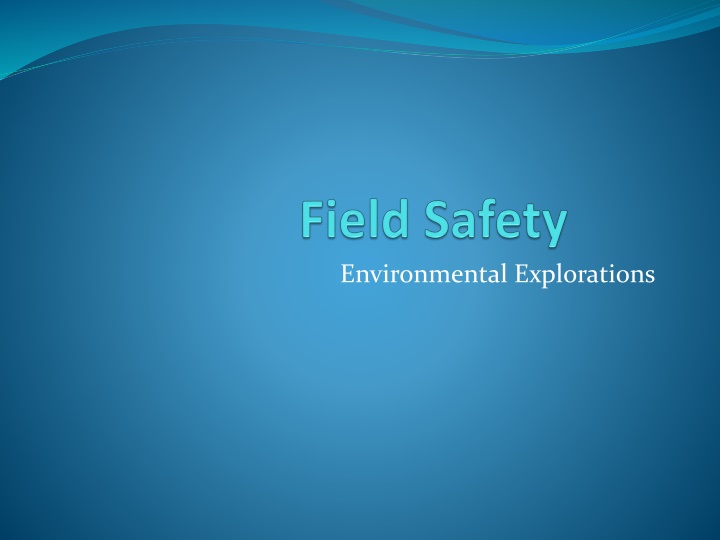Field Biology: Dangers to Students and the Environment
Explore the dangers of field biology, including encounters with toxic plants like poison ivy and pokeweed, invasive species such as Canadian thistle, and venomous creatures like bees, wasps, and copperhead snakes. Learn safety tips for handling snakes and protecting the environment from littering and harmful activities.
Download Presentation

Please find below an Image/Link to download the presentation.
The content on the website is provided AS IS for your information and personal use only. It may not be sold, licensed, or shared on other websites without obtaining consent from the author.If you encounter any issues during the download, it is possible that the publisher has removed the file from their server.
You are allowed to download the files provided on this website for personal or commercial use, subject to the condition that they are used lawfully. All files are the property of their respective owners.
The content on the website is provided AS IS for your information and personal use only. It may not be sold, licensed, or shared on other websites without obtaining consent from the author.
E N D
Presentation Transcript
Field Biology Dangers to the student Dangers to the environment
Poison Ivy Causes painful itchy rash One of the first plants to get red leaves in the fall Oil from the plant causes the allergic reaction Can be spread all over your body and between people Occurs as vine and short plants
Pokeweed Poisonous berries Used as a natural dye Cooked leaves are eaten by some people
Canadian Thistle Invasive plant from Canada Leaves can cause scratches and allergic reactions
Bees and wasps Most do not sting But you don t know which ones do or don t
Poisonous snakes Only 2 in Loudoun County Copperhead Timber rattlesnake
Copperhead Found in Ashburn Aggressive especially in hot weather Occurs in fields and even yards
Timber rattlesnake Not in Ashburn Can be found on the Blue Ridge Mountain Not as aggressive as the copperhead Has a distinct rattle warning
Snake safety If you see a snake, let a teacher know immediately Do not approach the snake It is probably a black snake common to Ashburn Poisonous snakes have vertical pupils If you can see his eyes you are too darn close Do not run or scream Snakes can strike up to 1 times their length
Dangers to the environment Littering Throwing chemicals on the ground Releasing lab animals into the schoolyard Breaking branches Killing insects






















